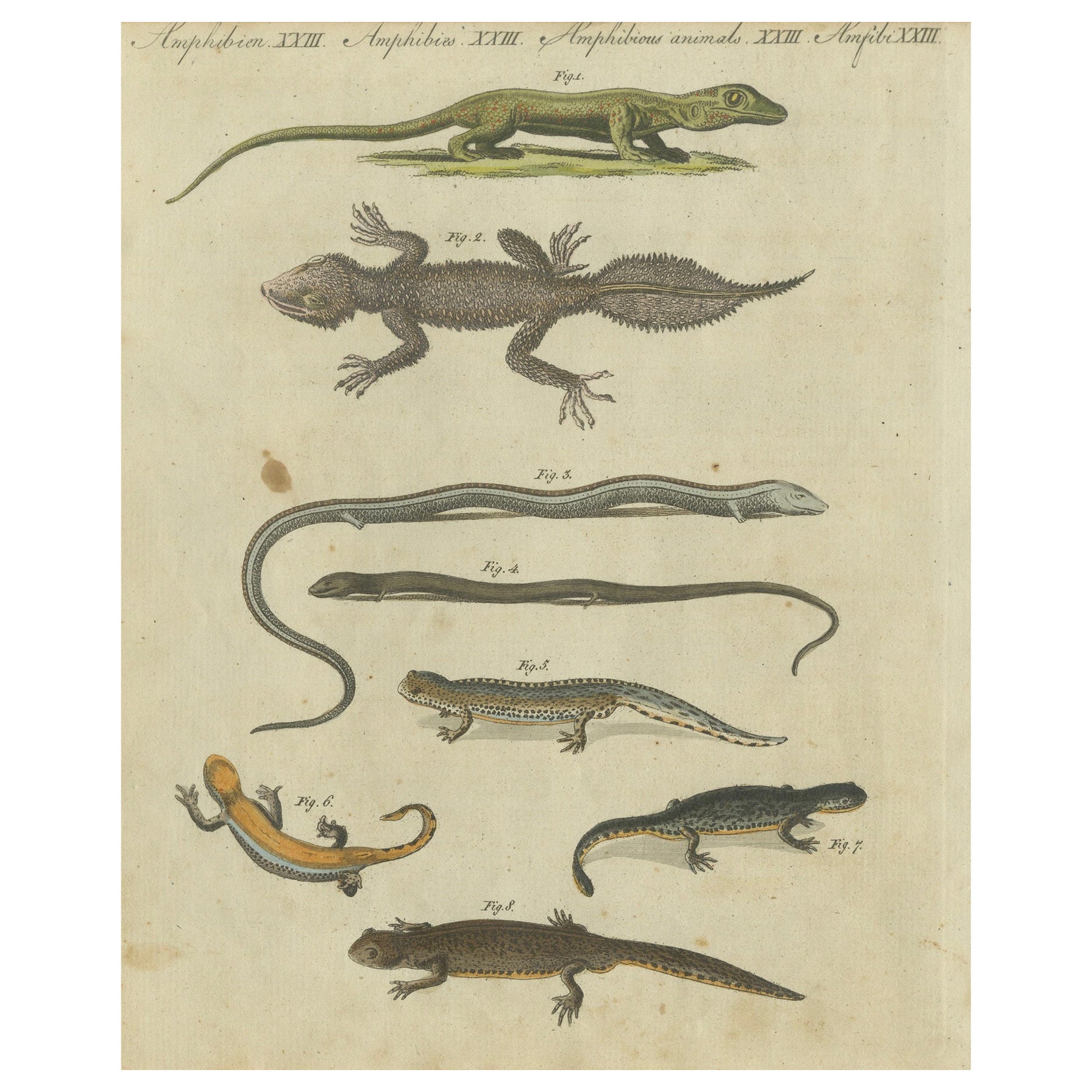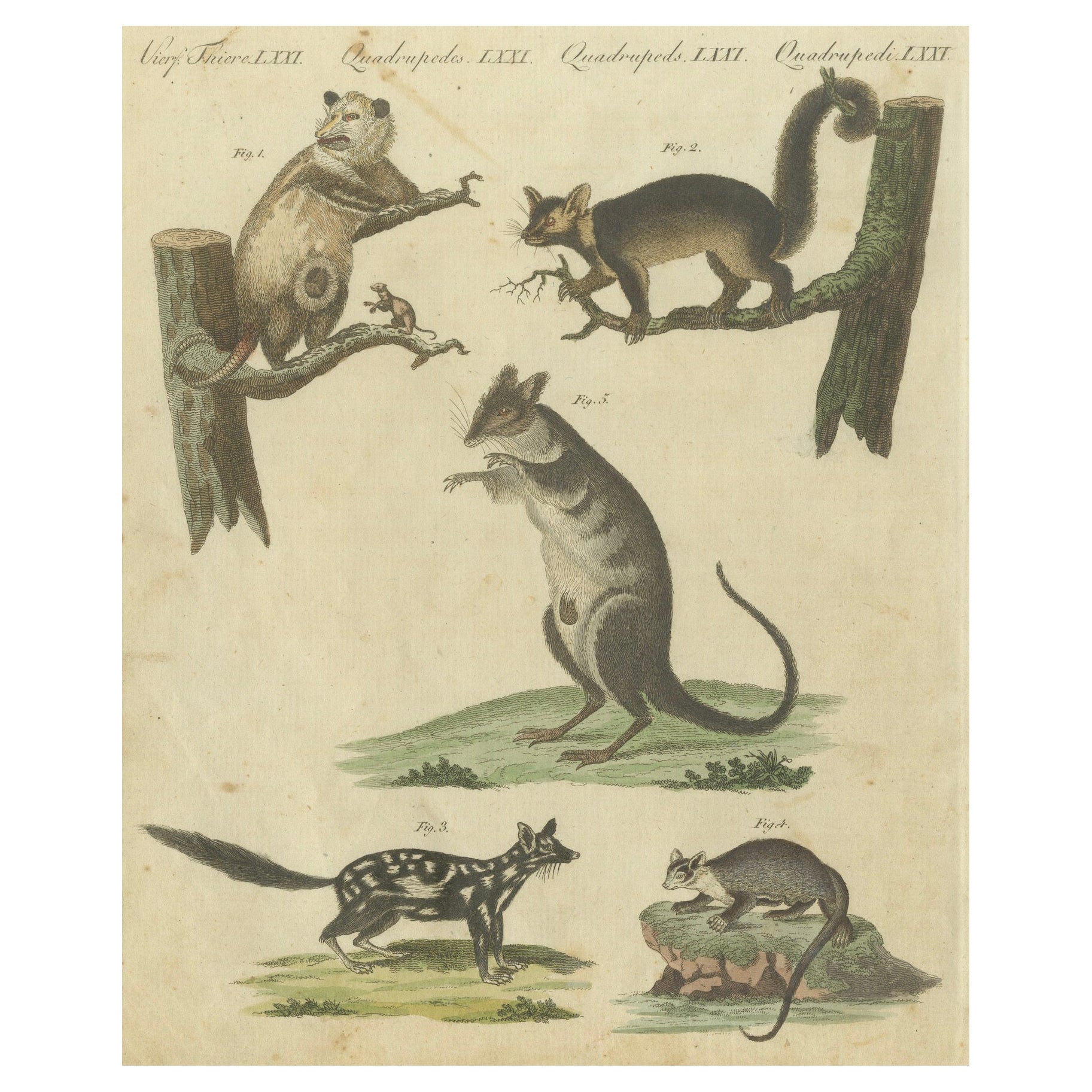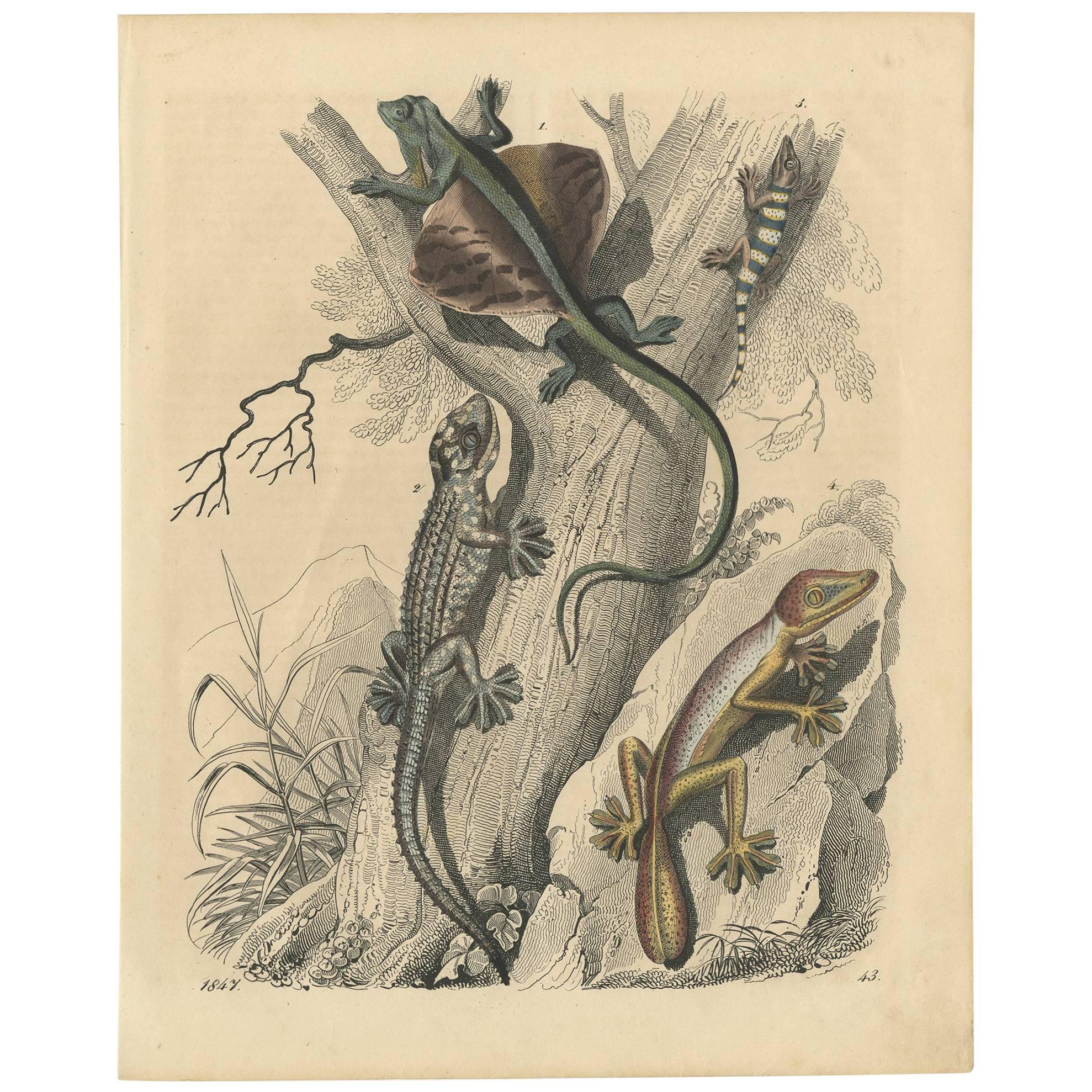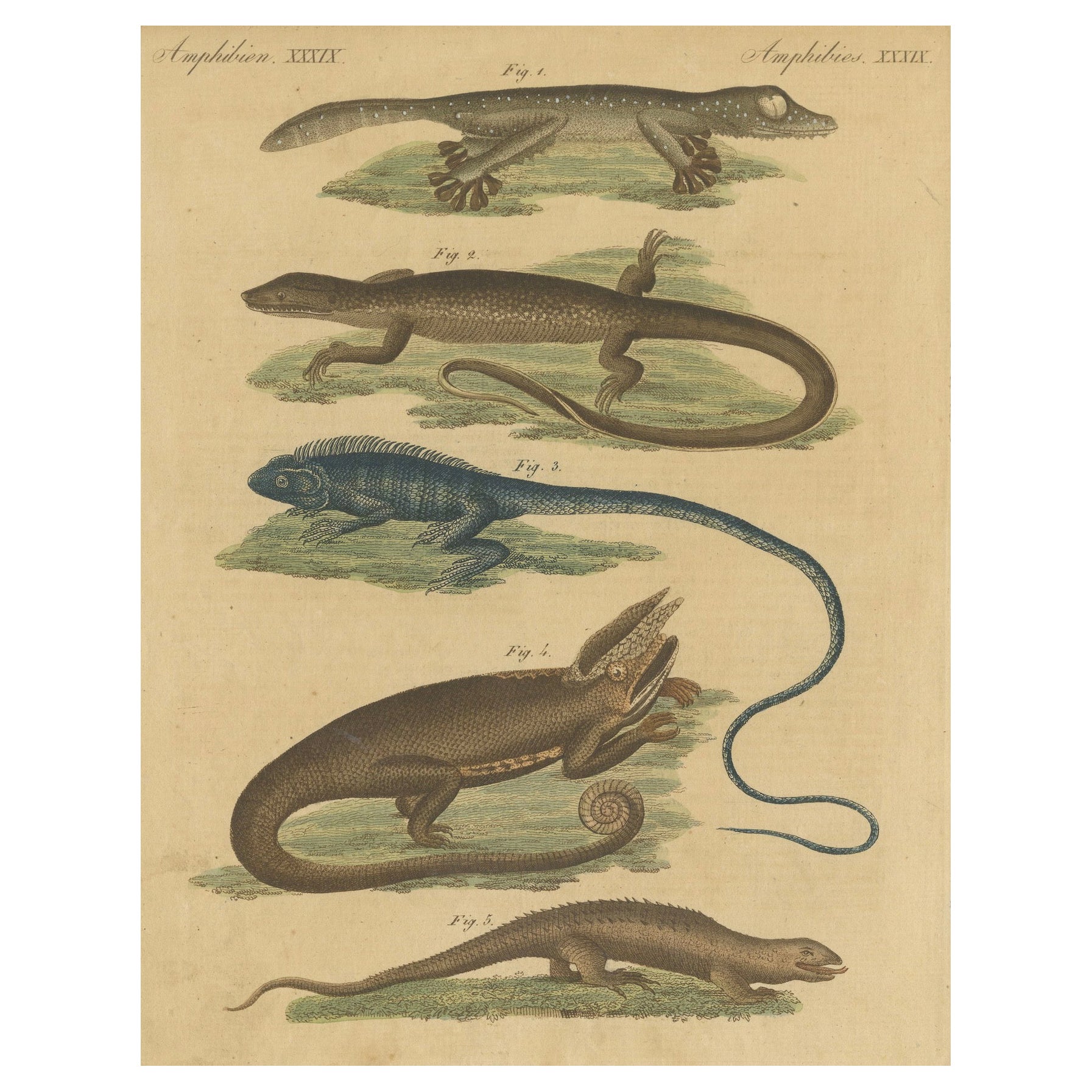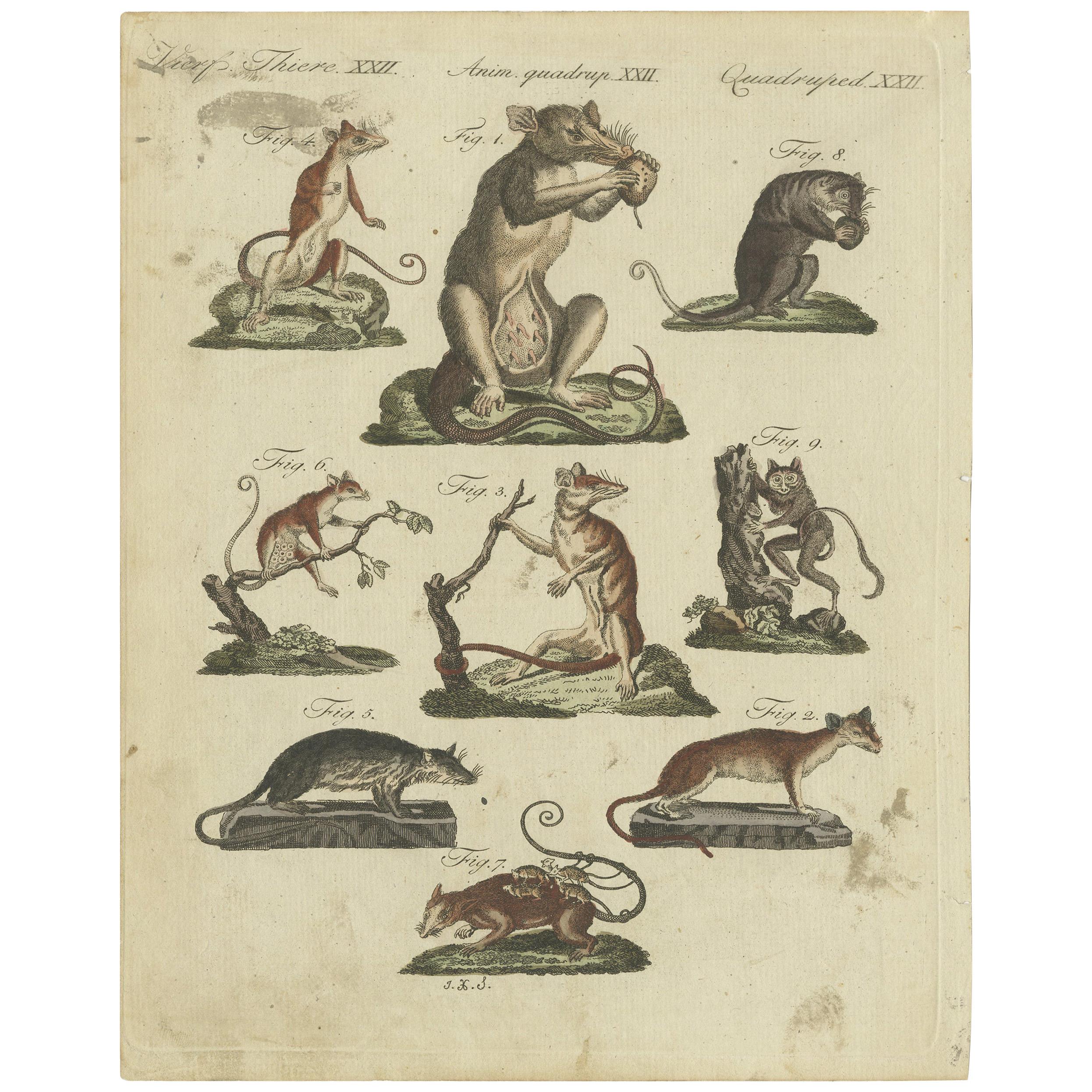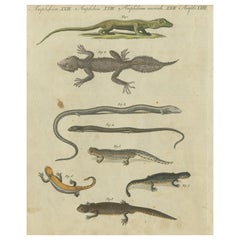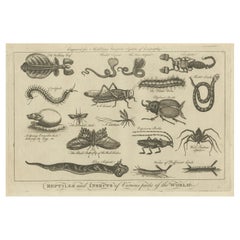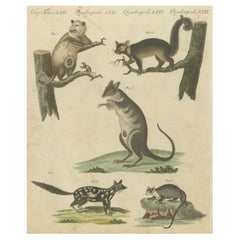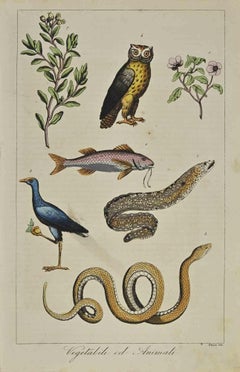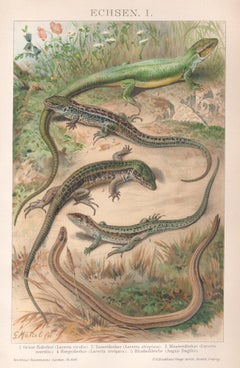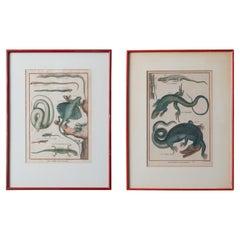Items Similar to Natural History Illustrations: Amphibians, Reptiles, and Mammals, 1793
Want more images or videos?
Request additional images or videos from the seller
1 of 7
Natural History Illustrations: Amphibians, Reptiles, and Mammals, 1793
$316.31
$395.3920% Off
£235.43
£294.2920% Off
€264
€33020% Off
CA$433.27
CA$541.5820% Off
A$481.89
A$602.3620% Off
CHF 251.63
CHF 314.5320% Off
MX$5,864.04
MX$7,330.0520% Off
NOK 3,213.65
NOK 4,017.0620% Off
SEK 3,013.83
SEK 3,767.2920% Off
DKK 2,009.74
DKK 2,512.1720% Off
Shipping
Retrieving quote...The 1stDibs Promise:
Authenticity Guarantee,
Money-Back Guarantee,
24-Hour Cancellation
About the Item
This image is an illustration from a natural history work, a collection titled "Getreue Abbildungen naturhistorischer Gegenstände in Hinsicht auf Bechsteins kurzgefasste gemeinnützige Naturgeschichte des In- und Auslandes." This title suggests that the book aims to provide accurate representations of natural history subjects in relation to a concise and useful natural history of both domestic and foreign realms.
The publication information indicates it was published in Nuremberg, by Schneider and Weigel's art and book dealership, sometime between 1793 and 1809. This places the work in the late 18th to early 19th century, a period during which natural history was a popular subject, and many scientists and enthusiasts were engaged in the classification and illustration of flora and fauna.
The image depicts two frogs or toads, a lizard-like creature, and a leopard. The creatures are rendered in a style typical of the time, with an attempt at scientific accuracy but also with some artistic embellishment that reflects the illustrative methods of the era.
The text below the leopard reads "Der Leopard. Felis Leopardus. Lin.", which translates to "The Leopard. Felis Leopardus. Lin." indicating the scientific classification of the leopard according to the system developed by Carl Linnaeus, the father of modern taxonomy. The "Lin." is an abbreviation of Linnaeus' name, commonly used to denote the authority who first described a species.
Such works were crucial in disseminating knowledge about the natural world to both the scientific community and the public at large, contributing to the development of natural sciences, including biology and zoology.
More about the technique used to make this print:
The image was created using hand-colored engraving, a common technique in the 18th and early 19th centuries for scientific and natural history illustrations. Here’s a breakdown of the process:
1. **Engraving**: The artist would engrave the illustration onto a metal plate, traditionally copper, by carving out the image with a burin (a fine-pointed tool). The engraved lines would hold the ink.
2. **Printing**: After the engraving, the plate would be inked, and then wiped clean, leaving ink only in the carved lines. The plate would be pressed onto a sheet of paper, transferring the inked image onto the paper.
3. **Hand Coloring**: The printed images would often be colored by hand using watercolors, gouache, or sometimes even colored inks. This step was done to add realism and visual appeal to the prints.
The hand coloring was an art in itself, requiring skilled artisans who could paint within the lines and mix colors to achieve the desired hues and effects, often making each print slightly unique. This technique was especially popular before the invention of color printing processes, which allowed for mass production of colored images later in the 19th century.
- Dimensions:Height: 10.83 in (27.5 cm)Width: 8.47 in (21.5 cm)Depth: 0 in (0.02 mm)
- Materials and Techniques:Paper,Engraved
- Period:1790-1799
- Date of Manufacture:1793
- Condition:Good. Some wear and tear visible along the edges; minor fraying or creases. Rough edges but image nicely colored with only two minor brown spots. Study the images carefully.
- Seller Location:Langweer, NL
- Reference Number:Seller: BG-13674-291stDibs: LU3054338324902
About the Seller
5.0
Recognized Seller
These prestigious sellers are industry leaders and represent the highest echelon for item quality and design.
Platinum Seller
Premium sellers with a 4.7+ rating and 24-hour response times
Established in 2009
1stDibs seller since 2017
2,508 sales on 1stDibs
Typical response time: <1 hour
- ShippingRetrieving quote...Shipping from: Langweer, Netherlands
- Return Policy
Authenticity Guarantee
In the unlikely event there’s an issue with an item’s authenticity, contact us within 1 year for a full refund. DetailsMoney-Back Guarantee
If your item is not as described, is damaged in transit, or does not arrive, contact us within 7 days for a full refund. Details24-Hour Cancellation
You have a 24-hour grace period in which to reconsider your purchase, with no questions asked.Vetted Professional Sellers
Our world-class sellers must adhere to strict standards for service and quality, maintaining the integrity of our listings.Price-Match Guarantee
If you find that a seller listed the same item for a lower price elsewhere, we’ll match it.Trusted Global Delivery
Our best-in-class carrier network provides specialized shipping options worldwide, including custom delivery.More From This Seller
View AllFascinating 1805 Hand-Colored Engraving of Amphibians and Reptiles
Located in Langweer, NL
Fascinating 1805 Hand-Colored Engraving of Amphibians and Reptiles from Bertuch
This intricate hand-colored engraving is taken from Friedrich Justin Bertuch’s *Porte-Feuille des E...
Category
Antique Early 1800s Prints
Materials
Paper
The Wonders of Nature: Exquisite 18th Century Engravings of Reptiles and Insects
Located in Langweer, NL
This print, titled "Reptiles and Insects of Various Parts of the World," is an 18th-century engraved work issued around 1778 in London for Middleton. It features an array of meticulo...
Category
Antique Late 18th Century Prints
Materials
Paper
$258 Sale Price
20% Off
Hand-Colored 18th-Century Engraving of Exotic Quadrupeds from Natural History
Located in Langweer, NL
Title: 1805 Hand-Colored Engraving of Exotic Quadrupeds from F.J. Bertuch's Work
Description: This hand-colored engraving, created in 1805, originates from Friedrich Justin Bertuc...
Category
Antique Early 1800s Prints
Materials
Paper
Antique Animal Print of various Amphibians by C. Hoffmann, 1847
Located in Langweer, NL
This print originates from ‘Das Buch der Welt‘ by Carl Hoffmann. Published in Stuttgart, 1847. Lithographs by Engelhorn and Hochdanz.
Category
Antique Mid-19th Century Prints
Materials
Paper
$95 Sale Price
20% Off
Antique Handcolored Engraving of Lizards and Amphibians, c.1800
Located in Langweer, NL
Antique Handcolored Engraving of Lizards and Amphibians, Amphibien XXXIX, c.1800
This original handcolored copperplate engraving features a variety of lizards and amphibians, show...
Category
Antique Early 1800s Prints
Materials
Paper
Decorative Rare Antique Animal Print of Marsupial Species, circa 1800
Located in Langweer, NL
Original antique print of various marsupial species including mice, rat, opossum and others. This print originates from 'Bilderbuch fur Kinder' by F.J. Bertuch. Published, circa 1800.
Category
Antique Early 19th Century Prints
Materials
Paper
You May Also Like
Pangolin, Panther & Insects – Original Antique Zoological Print, circa 1849
Located in Fukuoka, JP
Pangolin, Panther & Insects – Original Antique Zoological Print, circa 1849
Dict. Univ. d’Hist. Nat., Plate 431
Description:
A captivating original hand-colored zoological engraving...
Category
Antique 19th Century French Prints
Materials
Paper
Plants and Animals - Lithograph - 1862
Located in Roma, IT
Plants and Animals is a lithograph on paper realized in 1862.
The artwork belongs to the Suite Uses and customs of all the peoples of the universe: " History of the government, of t...
Category
1860s Modern Figurative Prints
Materials
Lithograph
Lizards, antique natural history reptile chromolithograph print, circa 1895
Located in Melbourne, Victoria
'Echsen I'
Lizards - chromolithograph from a German natural history series.
Key to lizards below the image.
Gustav Mutzel was a German artist famous ...
Category
Late 19th Century Victorian Animal Prints
Materials
Lithograph
Robert Bénard - Lizard Engravings, c.1798
By Robert Benard
Located in Savannah, GA
Robert Bénard
(French, 1734-1794)
Original hand-colored copperplate engravings published in ‘Tableau Encyclopedique et Methodique …’. by M. L’Abbe Bonnaterre, 1789
sight: 7 by 10 i...
Category
Antique 1790s French Prints
Materials
Glass, Wood, Paper
$1,200 / set
Zoological Original Lithograph Featuring "the gentle cat" from 1831-35
Located in Hamburg, DE
Transport yourself to the Biedermeier era with this exquisite and rare original lithograph from the book "Neue Bildergalerie der Jugend." Published between 1831 and 1835 by Carl Hell...
Category
Antique 1830s German Biedermeier Prints
Materials
Paper
Original Antique Animal Prints, Lions and Tigers, 1847
Located in St Annes, Lancashire
Great images of Lions and tigers
Unframed.
Lithographs after Cpt. Brown with original hand color.
Published, 1847.
The measurement is for 1 print
Free shipping
Category
Antique 1840s English Folk Art Prints
Materials
Paper
More Ways To Browse
Frog Plates
Frog And Toad
Antique Metal Frog
Copper Frog
Lizard Carving
Oak Antique Vanity
Oak Map Cabinet
Old Hall 1790
Outdoor Metal Glass Top Dining Tables
Pagoda Display Cabinet
Pair Cockatoos
Pair Of Tole Urns
Paul Evans Cityscape Cabinet
Pen Knife
Perfume Cabinet
Persian Side Table
Pheasant Figure
Pill Box 800 Silver
